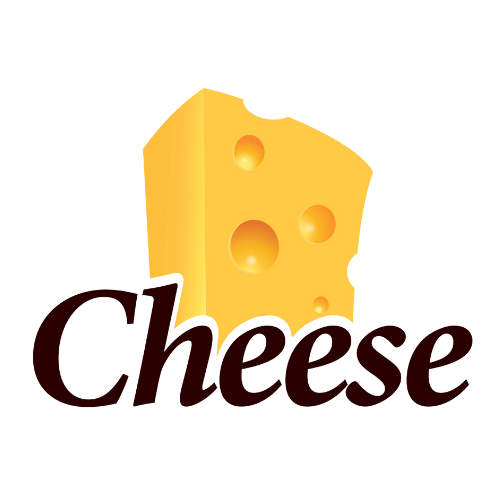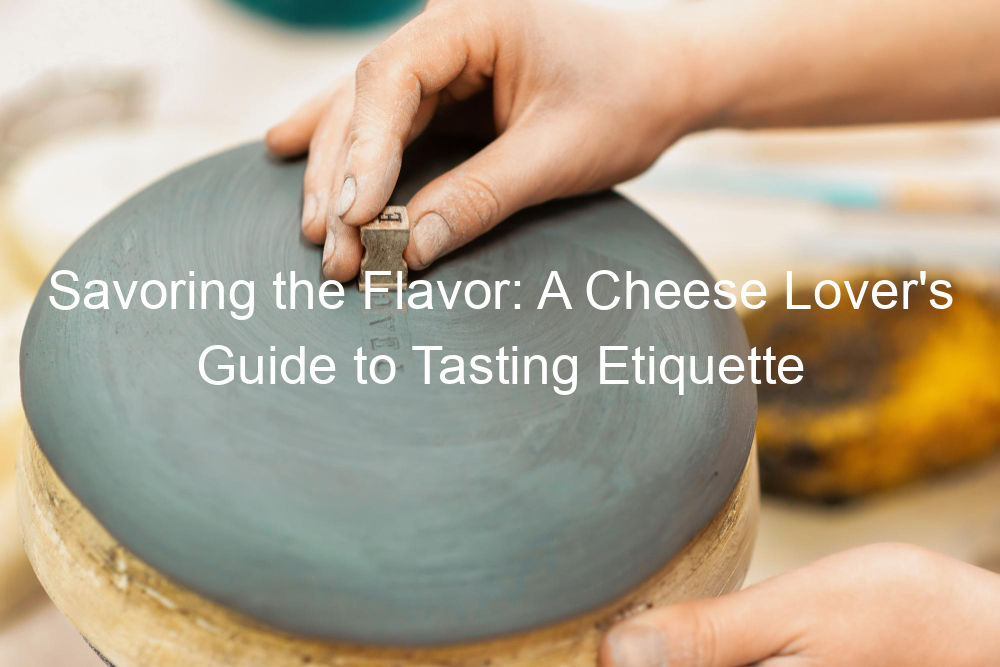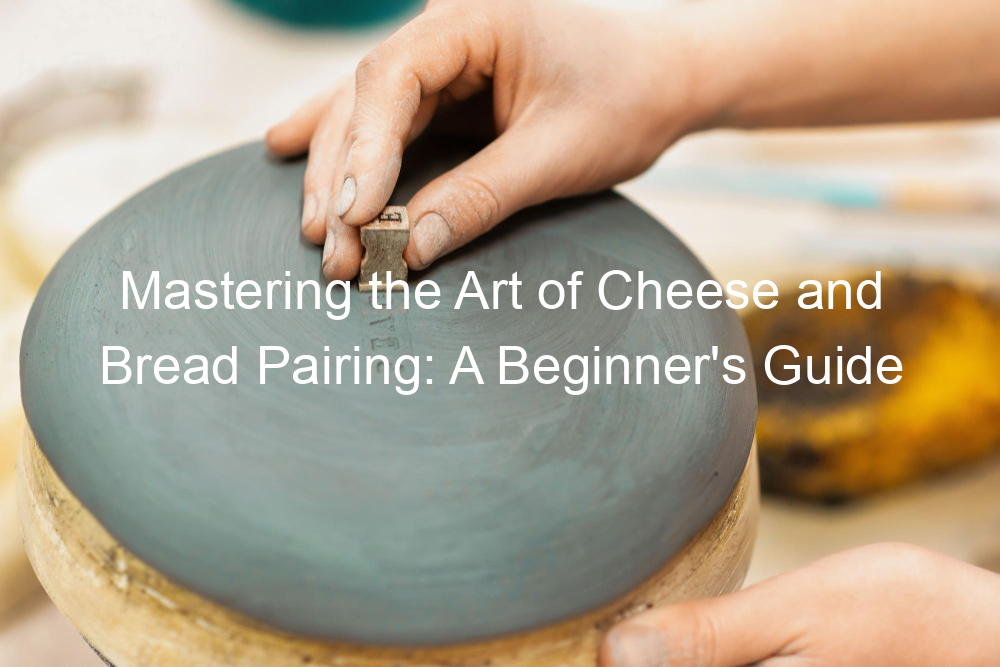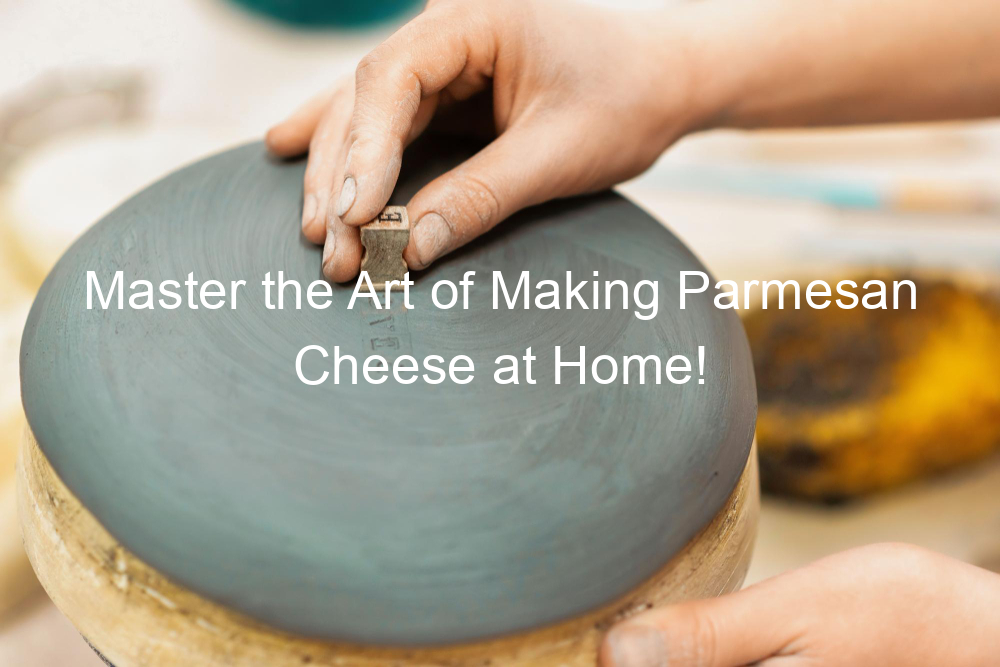
A Comprehensive Cheese Tasting Guide for Cheese Lovers
Welcome to the world of cheese tasting! This guide is designed to help you understand and appreciate the rich variety of flavors, textures, and aromas that cheese has to offer. Whether you’re a novice or a seasoned cheese lover, there’s always something new to learn and taste in the world of cheese.
-
- Introduction to cheese tasting
Cheese tasting is an art that involves all your senses. It begins with observing the cheese’s appearance, followed by smelling its aroma. The taste is savored, and the texture is felt on the tongue. The process is similar to wine tasting, and like wine, cheese also has a complex flavor profile that can be analyzed and appreciated.
There are thousands of different types of cheese, each with its unique taste and texture. Some are creamy and mild, while others are hard and pungent. The key to cheese tasting is to sample a wide variety of cheeses, take your time to savor each one, and keep an open mind. There’s no right or wrong when it comes to personal taste.
-
- Understanding the etiquette for cheese tasting
When attending a cheese tasting event, there are a few etiquette rules to keep in mind. First, always start with the mildest cheese and work your way to the strongest. This way, your palate won’t be overwhelmed by the strong flavors at the beginning. Second, use a separate knife for each cheese to avoid mixing flavors. Lastly, cleanse your palate between different types of cheese with water or a piece of bread.
It’s also important to respect others’ tastes and opinions. Everyone has a unique palate, and what tastes delicious to one person might not be the same for another. So, enjoy the experience, learn from others, and most importantly, have fun exploring the wonderful world of cheese!
Stay tuned for our next sections where we will delve deeper into the basics of cheese tasting, explore different types of cheese, and even guide you on how to host your own cheese tasting event. Happy cheese tasting!
Understanding the Basics of Cheese Tasting
If you’re a cheese lover, understanding the basics of cheese tasting can greatly enhance your appreciation for this delightful dairy product. The process involves more than just eating the cheese; it’s about observing, smelling, tasting, and assessing the aftertaste. Let’s delve into each step.
How to Taste Cheese: A Step-by-Step Guide
-
- Observing the Cheese
The first step in cheese tasting is to observe the cheese. Look at its color, shape, and texture. Is it soft and creamy or hard and crumbly? The appearance can give you a hint about the cheese’s age and type. For example, a Brie is typically soft and creamy, while a Cheddar is usually firm and crumbly.
-
- Smelling the Cheese
Next, bring the cheese close to your nose and take a deep breath. The aroma can tell you a lot about the cheese’s flavor profile. Some cheeses have a strong, pungent smell, while others are mild and sweet. Don’t be put off by a strong smell; it often means the cheese has a rich and complex flavor.
-
- Tasting the Cheese
Now comes the best part: tasting the cheese. Take a small bite and let it melt in your mouth. Try to identify the different flavors. Is it salty, sweet, bitter, or sour? Some cheeses even have a hint of nuttiness or fruitiness. Remember, there’s no right or wrong answer. Everyone’s taste buds are different.
-
- Assessing the Aftertaste
Finally, pay attention to the aftertaste. The flavor of the cheese can change after you swallow it. Some cheeses leave a lingering taste, while others have a clean finish. The aftertaste is an important part of the cheese tasting experience, so don’t rush through it.
By following these steps, you’ll be able to appreciate the complexity and richness of different cheeses. Happy cheese tasting!
Cheese Tasting Techniques for the Best Experience
For a truly unforgettable cheese tasting experience, there are several techniques that can enhance your enjoyment and appreciation of the diverse world of cheese. Let’s delve into these techniques:
-
- Using the Right Tools
Just as a painter needs the right brushes, a cheese lover needs the right tools for tasting. A cheese knife is essential for cutting cheese without crushing it. A cheese board, preferably made of wood or marble, is ideal for serving. Small forks or toothpicks can be used to pick up the cheese, and individual plates should be provided for each taster.
-
- Pairing Cheese with the Right Accompaniments
Pairing cheese with the right accompaniments can elevate the tasting experience. Fresh fruits like apples, pears, and grapes complement the flavors of many cheeses. Nuts, honey, and jams can also provide a delightful contrast to the cheese’s taste. For beverages, wine and cheese are classic partners, but don’t overlook beer and cider, which can also pair wonderfully with certain types of cheese.
-
- Storing Cheese Properly for Tasting
Proper storage is crucial to maintain the quality of the cheese for tasting. Cheese should be stored in the refrigerator, but it’s important to bring it to room temperature before tasting for the best flavor. Wrapping cheese in wax paper or cheese paper can help preserve its freshness. Avoid using plastic wrap, as it can suffocate the cheese and alter its taste.
By following these techniques, you can ensure that your cheese tasting experience is as enjoyable and rewarding as possible. Happy tasting!
Types of Cheese for Tasting
When it comes to cheese tasting, the variety is vast and exciting. Each type of cheese offers a unique flavor profile and texture, making cheese tasting a delightful culinary adventure. Let’s explore some of the different types of cheese that you can include in your tasting experience.
Exploring Different Cheese Varieties
There are countless cheese varieties worldwide, each with its unique characteristics. For our cheese tasting guide, we will focus on four main categories: hard cheeses, soft cheeses, blue cheeses, and aged cheeses.
- Hard Cheeses: These cheeses have a firm texture and are often aged for a long period. They are perfect for grating or slicing and often have a strong, rich flavor. Examples include Parmesan, Cheddar, and Gouda.
- Soft Cheeses: Soft cheeses are creamy and spreadable, often with a mild flavor. They are typically not aged for long, which contributes to their soft texture. Examples include Brie, Camembert, and Ricotta.
- Blue Cheeses: Known for their distinctive blue or blue-green veins, these cheeses have a strong, tangy flavor. They are often crumbled over salads or melted into sauces. Examples include Roquefort, Gorgonzola, and Stilton.
- Aged Cheeses: Aged cheeses are left to mature for months or even years, resulting in a deep, complex flavor. They can be hard or soft, depending on the aging process. Examples include Aged Cheddar, Gruyère, and Manchego.
Each of these cheese types offers a unique tasting experience. By including a variety of hard, soft, blue, and aged cheeses in your tasting, you can explore a wide range of flavors and textures. Happy cheese tasting!
Best Cheeses for Tasting
For all the cheese lovers out there, we have compiled a list of the best cheeses for tasting. These cheeses have been selected for their unique flavors, textures, and aromas. Let’s dive in!
- BrieBrie is a soft cheese that hails from France. It has a creamy texture and a mild, yet distinct flavor. The rind is edible and adds a slight tang to the overall taste. Brie is perfect for pairing with fruits like apples and grapes, or a nice glass of white wine.
- GoudaGouda is a semi-hard cheese from the Netherlands. It has a rich, sweet, and slightly fruity flavor that intensifies with age. Gouda is excellent on its own, but also pairs well with crackers and dark beers.
- CheddarCheddar is a hard cheese that originated in England. It’s known for its sharp, pungent flavor and firm texture. Cheddar is versatile and can be enjoyed in a variety of ways, from sandwiches to cheese platters.
- RoquefortRoquefort is a blue cheese from France. It has a strong, tangy flavor and a crumbly texture. The blue veins running through the cheese add a unique depth of flavor. Roquefort is best enjoyed with a robust red wine.
The best way to enjoy these cheeses is to taste them at room temperature. This allows the flavors to fully develop. Happy cheese tasting!
Hosting a Cheese Tasting
Hosting a cheese tasting party can be a fun and enlightening experience for all cheese lovers. It’s a great way to explore new flavors, learn more about different types of cheese, and share your passion with friends and family. But, planning a successful cheese tasting party requires some thought and preparation. Here are some steps to help you plan your cheese tasting party.
Planning Your Cheese Tasting Party
- Choosing the right cheeses: The first step in planning your cheese tasting party is selecting the cheeses. It’s best to offer a variety of cheeses to cater to different tastes. Consider including a mix of hard and soft cheeses, as well as different flavors and textures. For example, you could include a creamy brie, a sharp cheddar, and a tangy blue cheese. The goal is to provide a range of flavors for your guests to explore.
- Preparing the tasting area: The next step is to prepare the tasting area. Ensure the area is clean and free of strong odors that could interfere with the cheese tasting. Arrange the cheeses on a large platter or board, with plenty of space between each type of cheese. Label each cheese so your guests know what they are tasting. Provide separate knives for each cheese to avoid mixing flavors.
- Creating a tasting order: Finally, you’ll want to create a tasting order. It’s generally best to start with the mildest cheeses and work your way up to the strongest. This allows your guests’ palates to adjust gradually, rather than being overwhelmed by strong flavors right away. You might also want to provide a palate cleanser, like plain bread or crackers, between each cheese.
With these steps, you’re well on your way to hosting a successful cheese tasting party. The most important thing is to have fun and enjoy the experience of exploring new flavors with your guests. Happy cheese tasting!
Cheese Tasting Party Etiquette
When hosting a cheese tasting party, it’s important to follow certain etiquette rules to ensure a smooth and enjoyable experience for all. Here are some key points to keep in mind:
- Respecting the Tasting OrderJust like a symphony, a cheese tasting has a specific order that should be respected. Starting with the lightest, most delicate cheeses and moving towards the stronger, more robust ones allows your palate to appreciate the unique flavors and textures of each type. This order is designed to prevent the stronger cheeses from overpowering the taste of the milder ones. Wikipedia has a great article on the basics of cheese tasting, including the importance of tasting order.
- Using a Separate Knife for Each CheeseUsing a separate knife for each cheese is not just a fancy rule. It prevents the flavors from mixing, ensuring that each cheese can be tasted in its purest form. This is especially important when you’re dealing with cheeses that have strong and distinctive flavors. So, keep in mind to provide a separate knife for each cheese on your tasting board.
- Not Overloading on AccompanimentsWhile it’s common to serve accompaniments like fruits, nuts, and bread with cheese, it’s important not to overload. The star of the show should always be the cheese. Accompaniments should enhance, not overshadow, the cheese’s flavor. Choose a few well-paired accompaniments and let your cheese shine!
By following these simple etiquette rules, you can ensure that your cheese tasting party is a success. The goal is to enjoy and appreciate the wonderful world of cheese, so relax and savor the experience!
Enhancing Your Cheese Tasting Experience
One of the most delightful aspects of cheese tasting is pairing your favorite cheeses with the right beverages. This can significantly enhance your overall tasting experience. Here, we will explore some of the best pairings for cheese with wine and other beverages.
Pairing Cheese with Wine and Other Beverages
Wine and cheese are a match made in heaven. However, not all wines pair well with all cheeses. The key to a perfect pairing lies in balancing the flavors. Let’s take a look at some popular pairings.
- Pairing cheese with red wineRed wines, like Cabernet Sauvignon or Merlot, pair well with hard, aged cheeses like Cheddar or Gouda. The robust flavors of the wine are balanced by the rich, creamy texture of the cheese.
- Pairing cheese with white wineWhite wines, such as Chardonnay or Sauvignon Blanc, are excellent with soft, creamy cheeses like Brie or Camembert. The crisp acidity of the wine cuts through the creaminess of the cheese, creating a harmonious balance.
- Pairing cheese with beerBeer and cheese may seem like an unusual pairing, but they can be a delightful combination. Dark beers like stouts or porters pair well with strong, pungent cheeses like Blue Cheese. Lighter beers like lagers or pilsners are great with mild, creamy cheeses like Mozzarella.
The best pairing is the one you enjoy the most. So, don’t be afraid to experiment and find your own perfect cheese and beverage combination.
Creating the Perfect Cheese Board
Creating the perfect cheese board is an art that can enhance any cheese tasting experience. It involves selecting a variety of cheeses, adding fruits and nuts, and arranging them all in an appealing way. Let’s delve into each step.
-
- Selecting a Variety of Cheeses
Start by selecting a variety of cheeses. Aim for a mix of hard, soft, aged, and fresh cheeses to provide a range of flavors and textures. For example, you could choose a hard cheddar, a soft brie, an aged gouda, and a fresh goat cheese. This variety will keep your guests’ palates engaged and make your cheese board more visually appealing. Here is a list of cheeses you can consider.
-
- Adding Fruits and Nuts
Next, add some fruits and nuts to your cheese board. These can complement the flavors of the cheese and provide a refreshing contrast. Grapes, apples, and berries are popular fruit choices, while almonds, walnuts, and pecans are great nut options. The goal is to enhance the cheese, not overpower it, so choose fruits and nuts that pair well with your selected cheeses.
-
- Arranging Your Cheese Board
Finally, arrange your cheese board. Start by placing the cheeses on the board, spaced apart. Then, fill in the gaps with your fruits and nuts. You can also add some crackers or bread on the side. The key is to make the board look abundant and inviting. Don’t be afraid to pile things up and let them overlap a bit. The more abundant your board looks, the more enticing it will be.
The perfect cheese board is about more than just the cheese. It’s about creating a feast for the eyes as well as the palate. So, get creative, have fun, and most importantly, enjoy your delicious creation!






